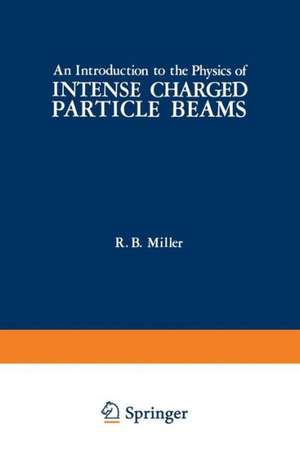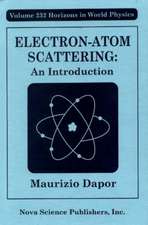An Introduction to the Physics of Intense Charged Particle Beams
Autor R. Milleren Limba Engleză Paperback – 16 feb 2012
Preț: 391.02 lei
Nou
Puncte Express: 587
Preț estimativ în valută:
74.83€ • 77.84$ • 61.78£
74.83€ • 77.84$ • 61.78£
Carte tipărită la comandă
Livrare economică 12-26 aprilie
Preluare comenzi: 021 569.72.76
Specificații
ISBN-13: 9781468411300
ISBN-10: 1468411306
Pagini: 364
Ilustrații: X, 352 p.
Dimensiuni: 152 x 229 x 19 mm
Greutate: 0.49 kg
Ediția:Softcover reprint of the original 1st ed. 1982
Editura: Springer Us
Colecția Springer
Locul publicării:New York, NY, United States
ISBN-10: 1468411306
Pagini: 364
Ilustrații: X, 352 p.
Dimensiuni: 152 x 229 x 19 mm
Greutate: 0.49 kg
Ediția:Softcover reprint of the original 1st ed. 1982
Editura: Springer Us
Colecția Springer
Locul publicării:New York, NY, United States
Public țintă
ResearchCuprins
1. Introduction.- 1.1. Background.- 1.2. Pulsed Power Technology.- 1.3. Qualitative Behavior of Charged Particle Beams.- 1.4. The Macroscopic Fluid Description.- 2. Intense Electron and Ion Beam Generation.- 2.1. Introduction.- 2.2. Electron Emission Processes.- 2.3. Electron Flow in High-Power Diodes.- 2.4. Ion Flow in High-Power Diodes.- 2.5. Summary.- 3. Propagation of Intense Beams in Vacuum.- 3.1. Introduction.- 3.2. General Equations for Laminar Flow Equilibria.- 3.3. Space-Charge-Limiting Current.- 3.4. Virtual Cathode Formation.- 3.5. Laminar Flow Equilibria of Unneutralized Relativistic Electron Beams.- 3.6. Electron-Neutralized Transport of Intense Ion Beams in Vacuum.- 3.7. Electrostatic Stability of Intense Relativistic Electron Beams.- 3.8. Summary.- 4. Propagation of Intense Beams in Plasma.- 4.1. Introduction.- 4.2. Current Neutralization.- 4.3. Macroscopic Beam—Plasma Equilibria.- 4.4. Macroscopic Beam—Plasma Instabilities.- 4.5. Microscopic Instabilities.- 4.6. Plasma Heating by Linear Relativistic Electron Beams.- 4.7. Summary.- 5. Propagation of Intense Beams through Neutral Gas.- 5.1. Introduction.- 5.2. Beam-Induced Neutral Gas Ionization Processes.- 5.3. Neutral Gas Transport for Ib/Il IA.- 5.6. Summary.- 6. High-Power Sources of Coherent Radiation.- 6.1. The Relativistic Microwave Magnetron.- 6.1.3. Interaction of the Electron Space Charge and the rf Fields.- 6.2. The Electron Cyclotron Maser (ECM).- 6.3. The Free Electron Laser (FEL).- 6.4. Summary.- 7. Collective Ion Acceleration with Intense Relativistic Electron Beams.- 7.1. Introduction.- 7.2. Summary of Results for the Neutral Gas andVacuum Diode Systems.- 7.3. The Ionization Front Accelerator (IFA).- 7.4. Wave Collective Ion Acceleration Mechanisms.- 7.5. Summary.- 8. Particle Beam Fusion Concepts.- 8.1. Introduction.- 8.2. Pellet Implosion Criteria.- 8.3. Electron Beam Fusion Concepts.- 8.4. Ion Beam Fusion Concepts.- 8.5. Summary.
















